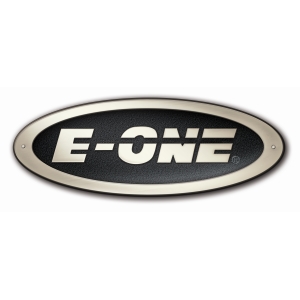E-ONE, a subsidiary of REV Group and a manufacturer of fire apparatus, begins delivery of the first of 25 HazMat vehicles to the United States Air Force. The first HazMat vehicle will be transported to a destination in the Middle East and is painted in a matte finish, desert sand. The additional 24 vehicles will be going to U.S. Air Force bases around the world. All 25 of the U.S. Air Force HazMat vehicles are being built on an E-ONE Typhoon cab/chassis. Nineteen of the trucks will be 4×2 units and the balance will be 4×4 units.
Breathing air refill stations
Each of these HazMat vehicles feature:
- Three-door custom E-ONE Typhoon cab
- Cummins 450HP engine (or 400HP export engine) and 3000 Allison transmission
- Meritor axles with up to 20,000 front and 27,000 rear GVW rating
- 12,000 lb Warn Series 12 winch with 125′ 3/8″ plated cable
- Rear cab command area containing two workstations
- 16-foot non walk-in extruded aluminum body design
- Retractable awnings on both sides of body
- Over 700 cubic feet of compartment storage with slide out shelving
- Onan 25kW PTO generator
- Federal Signal LED warning light package
- 15-foot Night Scan Powerlite light tower with four 1500 watt 230 volt Optimum quartz light heads
Other options on select HazMat vehicles include cascade breathing air refill stations and automatic tire chains.
state-of-the-art apparatus
“The Air Force is looking forward to receiving the 25 HazMat vehicles from E-ONE that will replace an aging fleet across the Air Force Enterprise,” said Fred Terryn, Fire Vehicle Program Manager for the U.S. Air Force, who was at E-ONE recently for final inspection of the first of these vehicles. “The new HazMat vehicles from E-ONE will bring us a state-of-the-art apparatus to handle all hazards that we encounter at Air Force Installations on a daily basis.”
Derrick Dias, E-ONE’s Government & Airport Products Sales Manager, said “We are honored the United States Air Force has trusted E-ONE to provide these front line vehicles to our military first responders. We look forward to working with the U.S. Air Force on these apparatus and continuing to provide vehicles that will help them protect lives and property.”
















